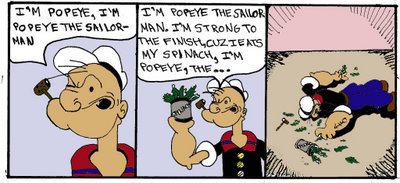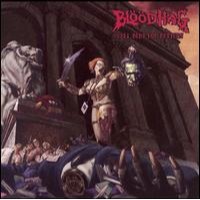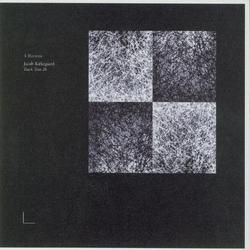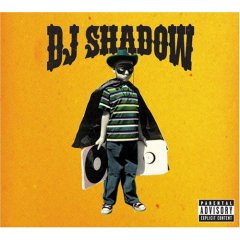
Recently, I’ve come into possession of an Xbox 360 via a very generous girlfriend on our third anniversary. Needless to say, I’ve spent some quality time with the system lately and have come away with the following impressions.
But, first, the caveat:
I’m not a gamer in the traditional sense of the word; at least not in the sense that I can consistently commit time to games so that they can be finished in a reasonable time. Like books, I own far too many games that I’m not likely to finish within my lifetime. The problem is, I probably derive half my thrill in buying games from the actual act of buying. There’s something about finding a game for a really good price and then getting it – basically, I live for the deal.
So even with this need for buying games, I’m really only finishing maybe one to five titles per year; five being a really good year, perhaps like this past year where I finally knocked off Growlanser, Shadow of the Colossus, Shadow Hearts and Katamari Darmacy (keep in mind I’ve started and have not finished the following games: Final Fantasy 8, X-Men Rise of the Sentinels, Kingdom Hearts, Ring of Red and Dark Cloud).
The other thing of course, is that I’ve primarily been loyal to Sony and its various itineration of the PlayStation (with a little Nintendo handheld gaming on the side). With Sony, I’ve been adherent to mostly rpg-fare with the prerequisite large but clichéd story, the necessary continuous leveling up and the less-than-necessary but still included, long-ass cut scenes straight out of a bargain bin anime.
With Sony, we’re making some obvious assumptions – one of the most important being that I have little-to-no online gaming-experience. The Sony console and online gaming are essentially mutually exclusive terms. And while both are fantastic for what they are, they are two things that do not coexist in my gaming vernacular.
So the Xbox 360:If there’s one thing Microsoft excels at in gaming, it’s the online play. While not nearly as robust as say, computer gaming, the Xbox 360 does offer a relatively cheap way to connect to other gamers through a simple user-interface. So, there’s some depth lost in favour of usability; but really, for someone with my level of background, it’s a valuable trade-off.
Plug in that Ethernet cable and give it a go; it’s almost that simple. While I’ve only really hit two or three games, I have to say that online play raises the console value. Instead of simply playing it out against the computer with its rote exercises, playing Madden becomes unpredictable. The computer won’t go for it on fourth and twenty. A player will. That fear of the unknown heightens the drama of gaming and makes each experience fresh.
Plus, the ability to speak to the other player adds an element that is frustrating, amusing and enriching all at the same time. It’s one thing to trash-talk a friend as you play them; it’s another thing to trash-talk some stranger from across the country, or world. On its own ironic level, the clash of cultures and the resulting absurdities of gaming against totally different subsets of people is worth the price of the Xbox alone.
As for the Games, I’ve played:
Madden 2007

Visually, it bests the other console releases. Unlike last year’s edition, there was enough time to improve the visual aspects of the game. From the player animations to the between snap close-ups of tense, sweating players, EA outdid itself with 2007.
Particularly, the physics model seems improved from previous releases. When players gain momentum, it translates in the tackles – players moving quickly are harder to tackle or take longer to fall down, while players who get stuck in the backfield can get blown up from incoming defenders. The other bonus is that the character models are finally big enough that players aren’t lost when the offensive and defensive line collide. In previous Maddens, the running back would occasionally pop out of a throng of players to break a long run; it’s much less likely now as the running back can be clearly seen when they run through a hole.
In terms of options, the standards are locked in place: franchise and superstar are entrenched as the new focus of play. Other modes, found in the other console systems are surprisingly missing, which leads one to suspect that the graphical powerhouse comes delivered instead of some of these extraneous game play modes.
One area that’s unfortunately suspect is the individual alignments for offense, and more glaringly, defense. While offense offers hot-routes and audibles, blocking assignments can’t be changed, leaving offenses vulnerable when a defenses change coverage to blitz on the fly. Most frustrating of all is that individual defensive players’ audibles are nowhere to be seen.
While overall coverage (line, linebacker and secondary) can be called; an individual player cannot be selected for a particular defensive assignment. It might seem like a minor point, until playing someone else who knows his or her way around a quarterback such as McNabb or Michael Vick. With the ability to run, it becomes increasing frustrating that all linebackers must either be set to run-support or coverage; so, a running quarterback can either throw over the rushing linebackers or run for extra yards when defenses moves back into coverage.
Add to this volatile mix that occasionally the defenses can be slow to react to a play, and it makes it disheartening to play others who simply use this exploit over and over (I kid you not, one opponent I played ran only two plays the whole game – both exploited this coverage problem).
Madden 2007 is the pretty girlfriend you’ll want all your friends to see, even if she might not have a whole lot to say. The online play adds a ton of replay-ability despite a few missteps. It’s a great looking game that runs decently; as with any console launch game, as the development catches the technology, no doubt the game will escape its current paint-by-numbers structure.
Far Cry Instincts: Evolution
Here’s a game that already exists in limitless iterations, yet UbiSoft, in all its wisdom, decided to re-re-re-release it to the Xbox 360 with additional solo missions and a ton of multiplayer levels. Man, it really sucks when a company makes improves a game and steers it towards its strengths, which is offering endless ways to play online.
To be honest, the solo missions are plainer than an Amish dance recital and about as fun as having to build a barn for unkle Ezikiel to sleep in with his mules. The real cream of Far Cry is multiplayer with its all out chaos mode or team-based modes such as steal the sample and team chaos. The one element that differentiates Far Cry from a host of other angry-looking man-on-the-cover titles lining the wills of EB is the Predator element.
Basically, Predator gives the player superhuman powers for a limited time. It’s not a genre-defying exercise in any way, shape or form, but it’s fun to be able to jump twenty stories or punch another player like a mile into the air.
The other component that adds to freshness factor is the robust map-editor built into the game. Unlike many other titles, Far Cry’s editor does not take a doctorate to figure out. And, the resulting map that players can make run the gamut from intensely tight battlegrounds to giant fortresses with huge towers well over fifty stories high.
Multiplayer battles can host 16 players, although the trade-off between lots of action and huge lags is a big one. It also depends on the time of day; the busier the networks, the harder it is to accurately aim at other players as their character models skip around the screen like sugar-addled school kids.
Still, the maps are designed for maximum flexibility in play styles and they are gorgeous – particularly the water display – which is the most accurate I’ve seen in a game.
Far Cry as a game is average at best; Far Cry as an online experience is highly rewarding and something not to be missed: one of the first games to really bring out the best components of the Xbox 360 and Xbox live.








 Visually, it bests the other console releases. Unlike last year’s edition, there was enough time to improve the visual aspects of the game. From the player animations to the between snap close-ups of tense, sweating players, EA outdid itself with 2007.
Visually, it bests the other console releases. Unlike last year’s edition, there was enough time to improve the visual aspects of the game. From the player animations to the between snap close-ups of tense, sweating players, EA outdid itself with 2007.




